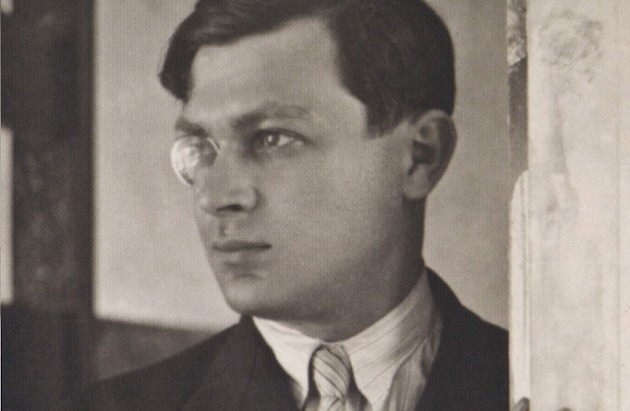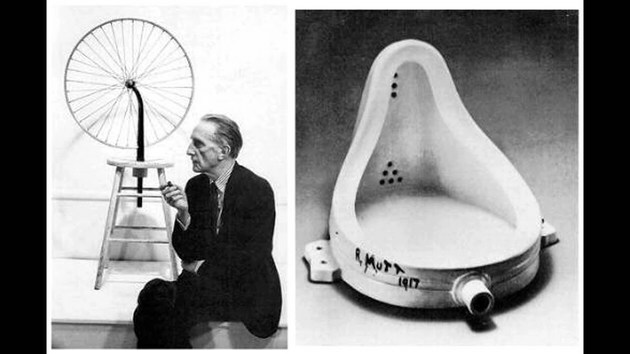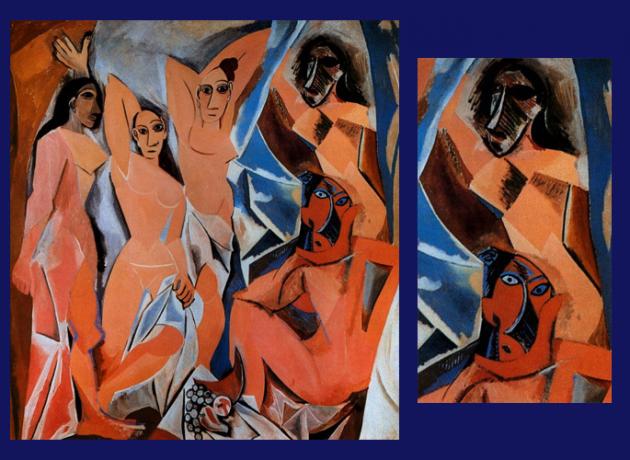O Dadaism, or simply “Dada”, was an artistic movement belonging to the European avant-gardes of the 20th century, whose motto was: "destruction is also creation".
It was considered the propelling movement of surrealist ideas and had an illogical, anti-rationalist and protest character.
This is because, through irony, he sought to question art and, above all, its historical context, with the occurrence of the First World War.
Characteristics of Dadaism
We can highlight some characteristics of the Dada movement, namely:
- Breaking with traditional and classic models;
- Avant-garde and protest spirit;
- Spontaneity, improvisation and artistic irreverence;
- Anarchism and nihilism;
- Pursuit of chaos and disorder;
- Illogical and irrational content;
- Ironic, radical, destructive, aggressive and pessimistic character;
- Aversion to war and bourgeois values;
- Rejection of nationalism and materialism;
- Criticism of consumerism and capitalism.
Origin of the Dada Movement

In 1916, artists and cultural agitators Hugo Ball, Emmy Hennings, Marcel Janco, Richard Huelsenbeck, Tristan Tzara, Sophie Tauber-Arp, and Jean Arp founded the Cabaret Voltaire.
The space was created with the intention of being a place for political and artistic manifestations in Zurich, Switzerland. There, a group of refugee artists with anarchist tendencies, including writers, painters and poets, gathered to inaugurate a new manifestation of art.
It is in this context that the Romanian poet Tristan Tzara (1896-1963) created the Dada movement, in the middle of the First World War, together with the artists Hugo Ball (1886-1927) and Hans Arp (1886-1966).
This art proposal was irreverent and spontaneous, based on irrationality, irony, freedom, absurdity and pessimism. The main aim was to shock the bourgeoisie of the time and criticize traditionalist art, war and the system.
That's how the term "dadaism" was randomly chosen. The artists gathered together decided to choose a term in a dictionary that, in a way, already indicated the illogical character of the movement that emerged. From the French, the term “dada” means “wooden horse”.

In this sense, Dadaism is considered a anti-art movement, as it questions art and seeks the chaotic and imperfection.
"I write a manifesto and I don't want anything, I therefore say certain things and I am on principle against manifestos (...). I write this manifesto to show that it is possible to do the opposite actions simultaneously, in a single fresh breath; I'm against action by continual contradiction, by affirmation too, I'm neither for nor against and I don't explain why I hate common sense. The work of art should not be beauty in itself, because beauty is dead.” (Tristan Tzara)
Dadaism in Brazil
Dadaism, as well as other European artistic avant-gardes, influenced the modernist movement that emerged in Brazil, especially after the Modern Art Week.
In literature, we can see this influence in some manifestations of the writers Mário de Andrade and Manuel Bandeira. In addition to them, the "experience theater" by Flávio de Carvalho and the paintings by Ismael Nery stand out.
See below a poem by Mario de Andrade, with Dada influence:
ode to the bourgeois
I insult the bourgeois! The nickel-bourgeois,
the bourgeois-bourgeois!
The well-done digestion of São Paulo!
The curve-man! the buttocks man!
The man who being French, Brazilian, Italian,
is always a cautious little-by-bit! (...)
Dadaism in Literature
Note that the Dada movement has spread in the fine arts and also in literature. Dada poets cultivated the random arrangement of words.
Thus, the lack of logic and irrationality, characteristic of Dadaism, was notorious. Thus, rhymes and poetic construction were trivialized.
According to Tristan Tzara, when emphasizing the importance of the sound of words over their meaning, to make a Dada poem it is necessary:
“Get a newspaper. Get the scissors. Choose from the newspaper an article the size you want to give your poem. Cut out the article. Then carefully cut out some words that make up this article and put them in a bag. Shake gently. Then take out each piece one after the other. Copy conscientiously in the order they are taken from the bag. The poem will look like you. And here he is, an infinitely original writer with a graceful sensibility, albeit misunderstood by the public.”.
Dada Artists

Some plastic artists and poets who participated in the Dada movement were:
- Tristan Tzara: Romanian poet;
- Marcel Duchamp: French poet, painter and sculptor;
- Hans Arp: German poet and painter;
- Francis Picabia: French poet and painter;
- Max Ernst: German painter;
- Raoul Hausmann: Austrian poet and visual artist;
- Hugo Ball: German poet and philosopher;
- Richard Huelsenbeck: German writer and psychoanalyst;
- Sophie Täuber: Swiss plastic artist.
To find out about other art movements, read:
- Expressionism
- Cubism
- futurism
- Fauvism
- Surrealism
- Conceptual art
- Performance in Art
Also check out this selection of questions that we have separated for you to test your knowledge: Exercises on European Vanguards.



